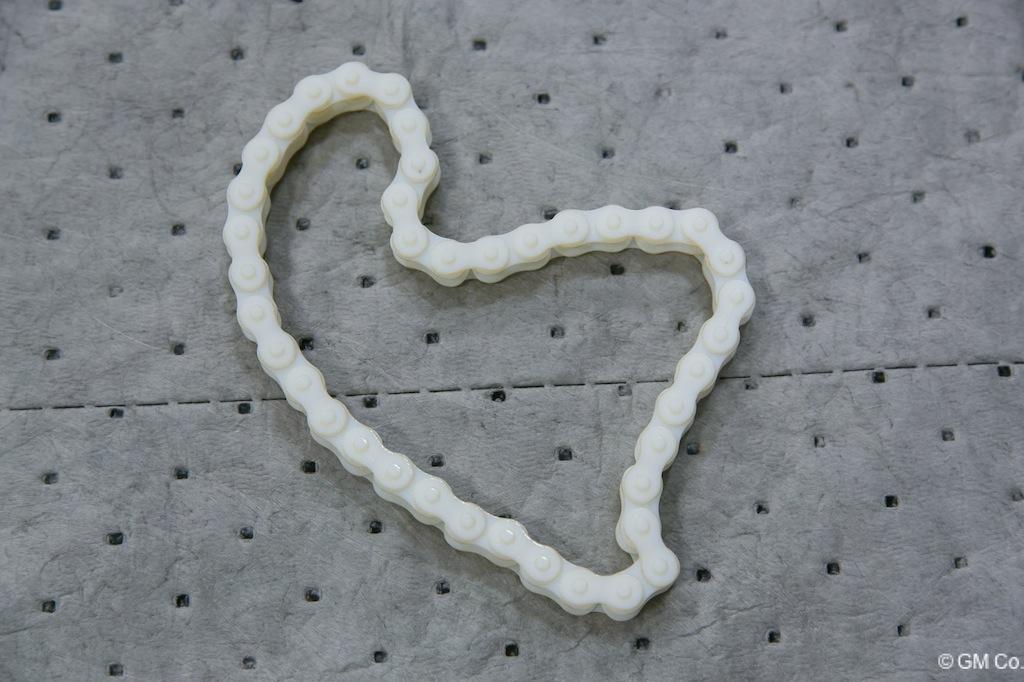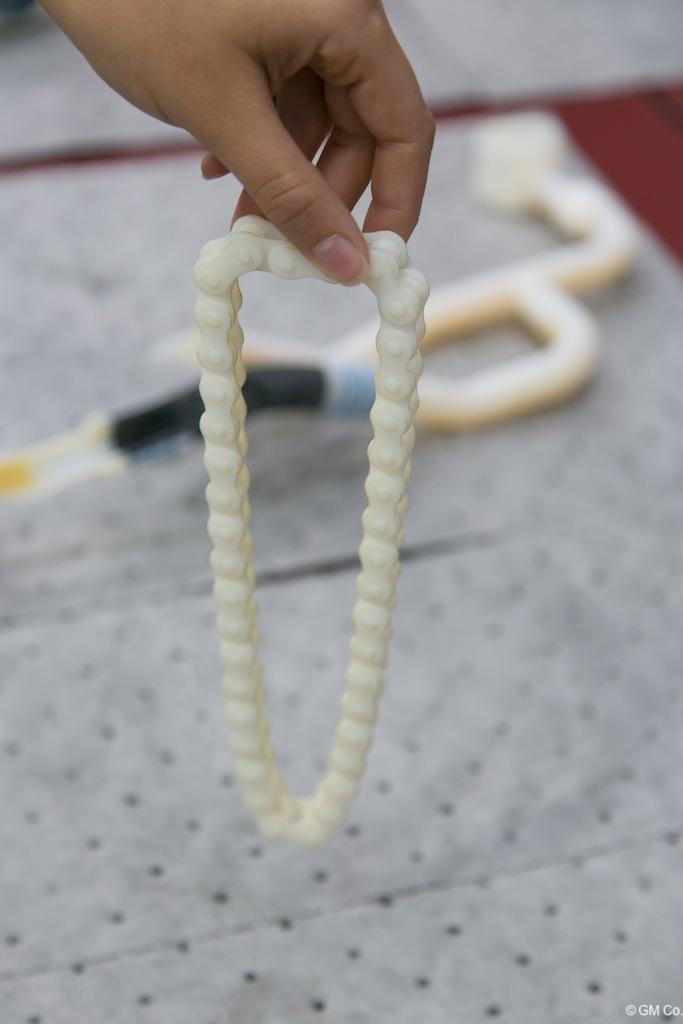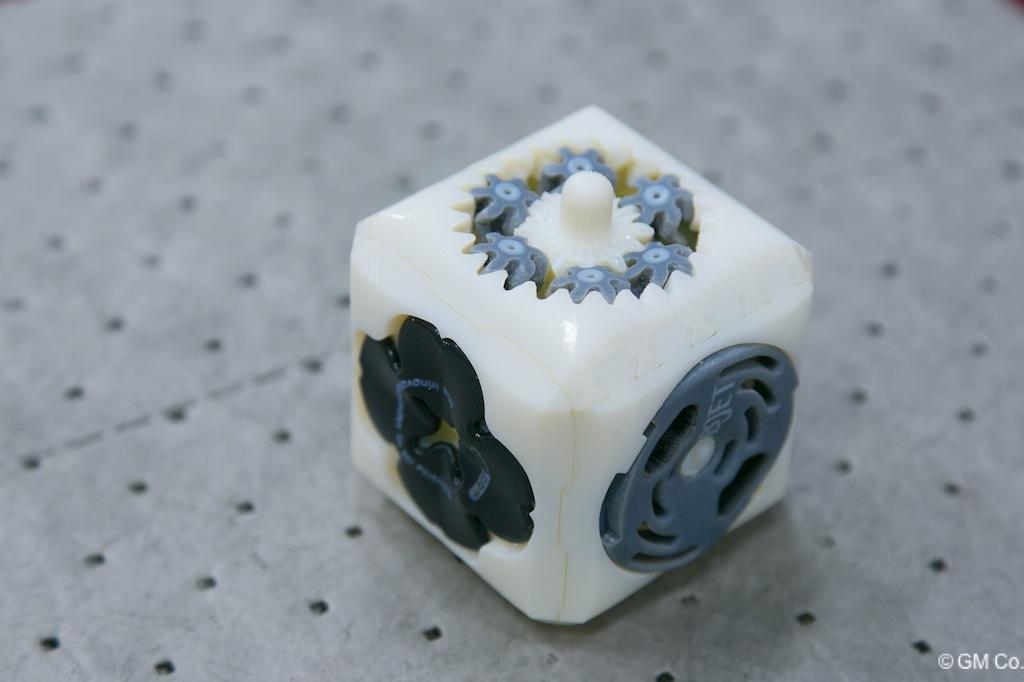The Auto Vivisectionist: Inside GM's Secret Teardown Lab
It's the killing ground where hundreds of thousands of dollars worth of SUVs, sports cars, and sedans meet their grisly end before they have more than a handful of miles on the clock. Some of General Motor's earliest work on building new models comes as much from tearing apart cars as it does piecing together fresh parts. That's the odd double approach of the Competitive Teardown Area, the high-security garage where cutting edge 3D printing and rapid prototyping sits alongside socket sets and angle grinders. The luckier cars start as homegrown constituent parts and leave as near-complete mockups of tomorrow's models; the unlucky ones – often wearing badges from Ford, Mercedes, Honda, Toyota, and other GM rivals – are making their final journey in one piece when they roll in through gates. It's the sort of place where, ordinarily, you'd need to be part of GM's engineering inner-circle to walk around, but SlashGear was invited to pay a special visit.
There are a few hurdles to jump if you want to visit the teardown and rapid prototyping lab. Buried inside GM's Detroit headquarters, staff the security desk in the glassy atrium politely but firmly insists on placing red stickers on top of your smartphone cameras – front and back – while multiple signs remind you that, if you're found bringing in a camera with its lens uncovered, you probably won't be leaving with it when you exit.
Once you're through the security doors, there's what feels like several miles of cubicle farm to walk through, punctuated with meeting rooms. The desks and coffee meeting areas eventually give way to corridors lined with corpses. GM wheels out the stripped results of its competitive teardowns, and leaves them – labeled with brand, model, and year – strewn against the walls, usually sawn in half along their length. Sometimes there's a forlorn piece of trim or electric window switchgear left in place, even though the windows themselves have long been removed. Nissan, Kia, Ford, Mercedes... all of the big car brands are represented.
LTE and spy cameras: SlashGear checks out what GM's dashboard of tomorrow might offer!
If the steel and aluminum remnants weren't enough to convince us we weren't in a regular lab, the brand new Ford Focus raised on a hydraulic lift among coffee pots and vending machines in a rest area was. GM staff mill around the car, peeing into and poking around their rivals' best efforts in the compact segment.
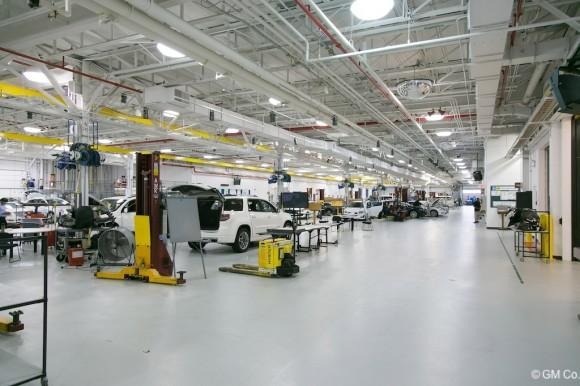
The Focus arguably has it easy, however; down the hall, its siblings are being torn apart. Through a final set of security doors and with protective eyewear in place, you find the Competitive Teardown Area, the 60,000 square-foot place where GM does its primary research into what makes other car manufacturers popular, and what it believes will make its own cars more so.
It's one of the cleanest garages you'll find. For the most part the vehicles are GM's own, everything from a brand new 2014 Corvette, lacking rear wheels and exposing its underbelly on a lift, through camouflage-wrapped prototypes for 2015 model year cars and beyond. Tucked under a tarp pinned with coded descriptions sat an unnamed mock-up pieced together – from what little we could see – as much out of scraps of wood and rubber as real parts.
[aquote]The outlook is grim if you're wearing the wrong badge[/aquote]
There are some interlopers present too, however, though the outlook is grim if you're wearing the wrong badge. Splayed in its constituent pieces across several benches lay the remains of a Range Rover; a Honda SUV had been the most recent victim, GM told us. Disconnected wiring looms snake between infotainment units ripped from dashboards, everything labeled up according to manufacturer and model and, sometimes, request forms with specific details people across GM want to extract from the vehicles.
The process starts before a single tool touches the car, though. GM first builds precise 3D models, inside and out, using photographic and laser scanning tools. It's a roughly two day process to create up a digital replica: first studding the area to be scanned with special self-adhesive labels and then running a stereoscopic camera head across it. Each of the labels – bought from German specialist GOM, at the not-inconsiderable cost of $1,200 for a mere eight rolls – allow the camera to figure out the precise distance between the points, and then the computer figure out the geometry of the panels in-between.
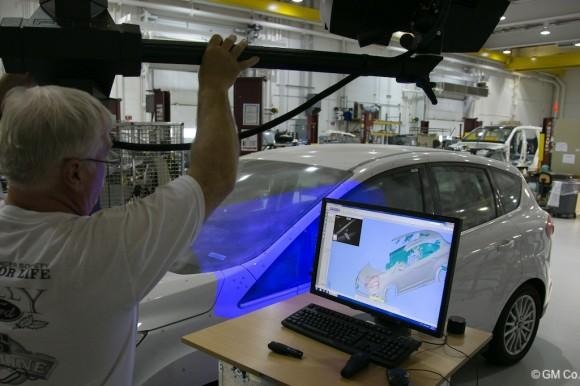
Exactly how long that takes depends on the scanning resolution of each camera. The image-based systems, for instance, which use white or blue light, can capture up to 750mm wide portions of the car in each shot; the laser scanners, which are considerably smaller not to mention more precise, have a comparatively smaller area of coverage, just 180mm wide. A wheel might take four blue light photos to document completely, with the end result detailed enough to make out the raised manufacturer text on the rubber of the tire. Still, you'd expect that sort of accuracy, when each blue light camera rig costs around $180k apiece.
The digital models created are useful for more than just double-checking wheelbase and dashboard width, however. GM's teardown engineers upload the 3D components to the company's intranet, where they can be picked over by staff all over the world. They also allow for cross-testing that would be unfeasible or financially outlandish. The models mean the company can do virtual crash testing between its cars and those its rivals offer, running experiments in hundreds of combinations and from different angles and speeds.
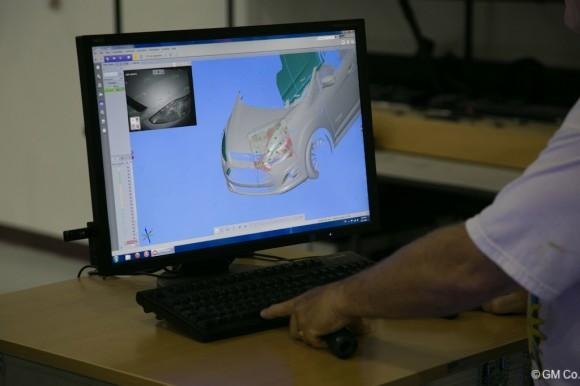
Mugshots aren't enough, however, and soon the socket sets come out. It's a methodical process, of course, not a free-for-all of destruction. Slowly but surely, though, the cars are taken down to nearly their constituent parts; in fact, sometimes GM even unwelds joins to examine how rival firms are piecing together components and how that might differ from how a Buick or Chevrolet is constructed. Once you get down to the chassis it doesn't stop, either; most of the exposed structures are dotted and sketched with blue ink, where special requests to see what's going on underneath the metal have led to specific cuts and the teardown equivalent of keyhole surgery.
"Sometimes, in product design, if you let a problem lie or you don't even realize the problem, the longer it goes the more expensive it becomes and the more impact it has in terms of the changes involved and the knock-on"
There's something odd about the competitive teardown process; something halfway to uncomfortable or sneaky. GM is blunt about the role it plays in its own car development: by understanding how its rivals make use of materials, piece together different components and, through some deductive thinking, the order in which they do so and the waste involved. There's also the understanding that it's something Ford, Mazda, BMW, and the other marques are doing themselves, just as Samsung and Apple pore over the smartphones and tablets their rivals create.
High-tech and cloud-connected: SlashGear goes in-depth on next-gen car infotainment for the 2014 Cadillac CTS
It's not all clandestine digging. There are so many shared suppliers that more than one car manufacturer uses, GM pointed out, that the lab's findings aren't necessarily only valuable to GM itself. Sub-standard production of components like bolts, electrical parts, and other elements that are common under the surface is regularly identified and reported as a result of the teardowns; indeed, there are "good neighbor" policies where GM has quietly told other car companies where a flaw or fault has been spotted.
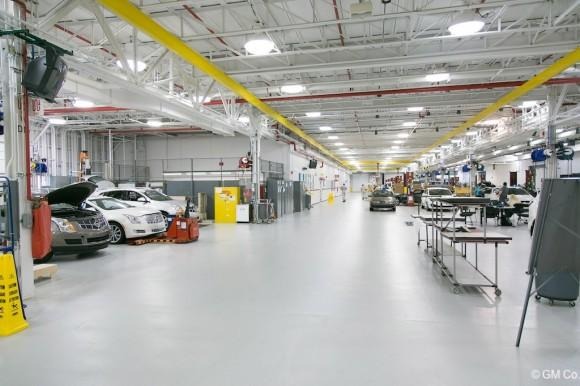
Not every car on the garage floor is new, either. GM also uses the facility when it has questions about its older models; the week before our visit, the team had brought through a mid-90s Saturn after an owner had complained about a persistent issue. Picking out a representative car and setting the engineers on it proved the easiest way to get the correct data (and, in the end, it turned out GM was right and the owner wrong, with the Competitive Teardown Lab supplying the evidence to back that up).
The Saturn rolled out in one piece after that analysis; there's an ignoble end for the vivisection subjects. The pieces are cataloged, and analyzed, and then when the lab is finished with them they're left out and engineers are invited to come pick out whatever bits they might want to keep. Then, while a chunk of the chassis might go on to be corridor decoration outside, the rest is recycled or safely disposed of.
The irony of the Competitive Teardown Lab is that just as much as it focuses on paring back cars to their constituent parts, it's also responsible for creating the very earliest components for GM's new models. On the other side of the garage is where the team thinks more about construction than demolition, and it's there that the latest methods in 3D printing and rapid prototyping are employed.
General Motors was, if not exactly slow to adopt rapid prototyping, then at least somewhat skeptical a few years back when it considered investing in 3D printing. Once the decision was made, however, the company didn't hold back, investing in specialist machines like a $300k printer that can simultaneously lay down different materials in a single pass. A test chain assembly, for instance, can be printed from rubber and resin, the latter removed so that the overall piece can flex just like the final metal product might. Even that could be superseded soon, however, with GM looking next to models capable of printing in metal.
[aquote]GM can effectively piece together a full-sized car in the lab[/aquote]
The output of 3D printers tends to be small, if precise, but GM can effectively piece together a full-sized mock-up using the array of machinery it has to choose between. As we walked between rows of humming CNC machines, each carving computer-controlled molds out of resin, the teardown team excitedly showed us how a huge metal press – a new addition to the lab's equipment – could punch out trial panels and components. That's perfect for one-off sections and new components that represent risk areas as they've never been attempted before, GM pointed out: they can manage 4-6 metal stamps from each resin mold, tweaking and adjusting as they go.
As the benefits of rapid prototyping continue to show themselves, so the team has become more self-sufficient. Until recently, it was cutting its sheet metal by hand; now, there's a new water-jet cutting rig which can precisely snip out each of the uniquely sized and shaped metal pieces needed for the custom press tooling. New equipment bumps up against old. Some of the CNC machines, GM admitted, are far from recent, picked either because they do "enough" to warrant their continued presence, or because they represent microcosms of what the company's full-sized production line has. The closer the kit the lab team uses, the better the guidance they can give to the people actually constructing cars.
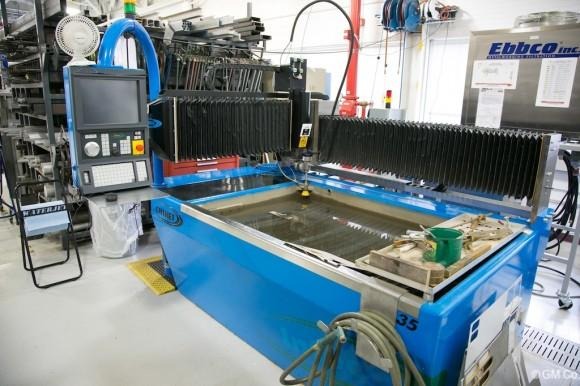
GM's fabrications range from a few key pieces to better understand how designs created in a virtual world will function in real-life, to full-scale cars. The latter are built on controlled surface plates, embedded into the floor and streaked with long grooves within which precise measuring equipment slides. Each plate is re-calibrated every 1-3 years to iron out any skew, since the individual measurements made at any point in space in the work area above are dependent on knowing exactly where the base of the hardware itself is.
[aquote]The process itself borders on the MacGyver[/aquote]
It's that precision – even around the most ramshackle collection of components – which is perhaps the most interesting aspect of the Competitive Teardown Area. The process itself borders on the MacGyver for the most part: jury-rigged pieces of composite, printed rubber, acrylic, wood, resin, aluminum, and steel coming together in a prototype patchwork on one half of the room, while the same materials are dismantled with surgical care on the other. At times there's more than the faintest whiff of the model maker to the process, but if that's the case then this is model making elevated to a multi-billion dollar art form.
GM won't say exactly what its budget for competitive analysis is each year. Certainly, though, the constant stream of cars coming through the process – as many as forty from rivals each year – and the growing investment in rapid prototyping technology, neither come cheap nor are anything more than the tip of the iceberg.
What it's convinced on, though, is that spending money on getting the data right in the first place is a better approach than fixing things later on, especially when you're working on cutting-edge cars like the all-electric Spark EV. "Math data, at the end of the day, is what we're going to use to make production tools. So, if we can impact that math data by correction or modification of imperfection, then that's the whole thing that we're about" GM's engineer in charge of the lab concluded. "We're going to mock it up, make sure it works, and get that data back to wherever it needs to get to. And then at the end of the day we've got a vehicle that truly has the least amount of imperfection possible."
Looking for more automotive news? SlashGear's Car Hub has you covered!

